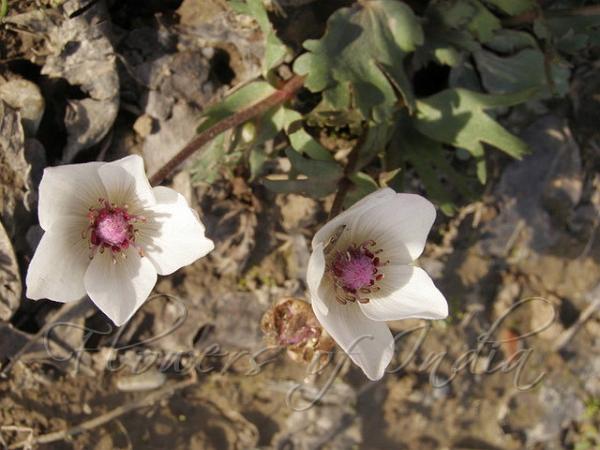|
| Turkistan Anemone |
|

|

| File size | 102548 |
| Original date | 3/5/09 3:00 PM |
| Resolution | 640 x 480 |
| Flash | Flash did not fire, auto |
| Focal length | 10.9mm |
| Exposure time | 1/200s |
| Aperture | 5.6 |
| Focus Distance | |
| Metering Mode | Multi-segment |
| Camera make | OLYMPUS IMAGING CORP. |
| Camera model | SP510UZ |
| Sensor type |
|
|
|
|
Photo: |
Botanical name: Anemone tschernaewii Family: Ranunculaceae (Buttercup family)
Synonyms: Anemone tschernjaewii, Anemone biflora auct. non DC.
Synonyms: Anemone tschernjaewii, Anemone biflora auct. non DC.
Turkistan Anemone is a beautiful flower found in the
region which was historically known as Turkistan: from Siberia to
Tibet, Kashmir, Afghanistan, and Iran. It has been widely misidentified
as Anemone biflora. It is a perennial herb, 5-30 cm tall, with a
tuberous rootstock. Flowers are borne 1-3, on comparatively long
flower-stalks bearing an involucel of two small leaves, 1.8-4 cm
across. Sepals, which look like petals, are 5, ovate-oblong to
oblong-lanceshaped, up to 1.5 cm long, pointed or blunt, white, pink or
dull violet-purplish. Anthers are usually purple, rarely yellow.
Carpels are densely hairy, styles purple, about as long as the mature
achenes. Leaves from the root are 1-2, with hairless leaf-stalks,
ternate, segments stalkless or wedge-shaped at base, usually shallowly
trifid, lobes rounded toothed-toothed with a few rather wide teeth.
Flowering stem is hairless, papillose in upper part. Involucral leaves
are 3, obovate, undivided or shallowly trifid, sparingly appressed
hairy or hairless. The species name is in honour of M.G. Tschernaew,
who was the governor of certain regions of Turkistan.
Turkistan Anemone is found in Tajikistan, Uzbekistan, Turkmenistan,
Afghanistan, Pakistan (doubful) and Kashmir, at altitudes of 1300-2000 m.
Flowering: April-May.
Medicinal uses: Local herbalists (Hakims)
inform that the powder of bulb is mixed with mustard oil or ghee and
the mixture is used to cure skin infection, itching and also to heal
wounds and burns.
Local herbalists (Hakims)
inform that the powder of bulb is mixed with mustard oil or ghee and
the mixture is used to cure skin infection, itching and also to heal
wounds and burns.
Medicinal uses:
 Local herbalists (Hakims)
inform that the powder of bulb is mixed with mustard oil or ghee and
the mixture is used to cure skin infection, itching and also to heal
wounds and burns.
Local herbalists (Hakims)
inform that the powder of bulb is mixed with mustard oil or ghee and
the mixture is used to cure skin infection, itching and also to heal
wounds and burns. | Identification credit: Anzar Khuroo | Photographed in Kashmir. |
• Is this flower misidentified? If yes,